Why you can trust Tom's Hardware
Our HDR benchmarking uses Portrait Displays’ Calman software. To learn about our HDR testing, see our breakdown of how we test PC monitors.
The P2712V supports HDR10 signals with an automatic switch. You get three specific modes, Auto, Movie and Game. There is no dynamic contrast, so you won’t get much drama, but it delivers accuracy on par with most of the other HDR screens I’ve tested.
HDR Brightness and Contrast
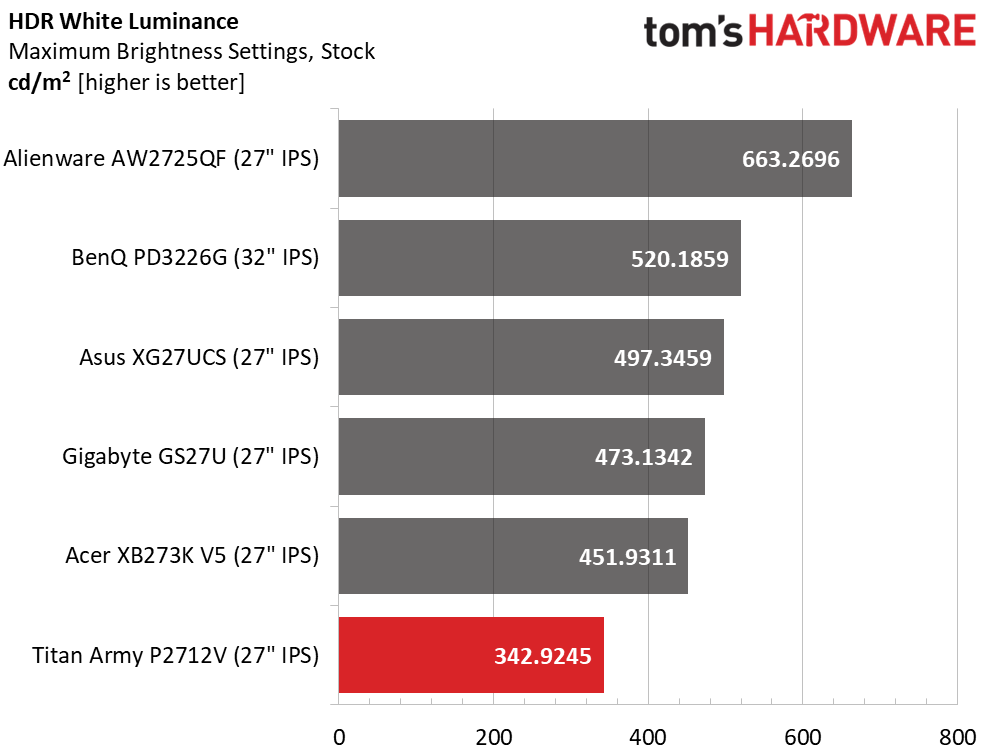
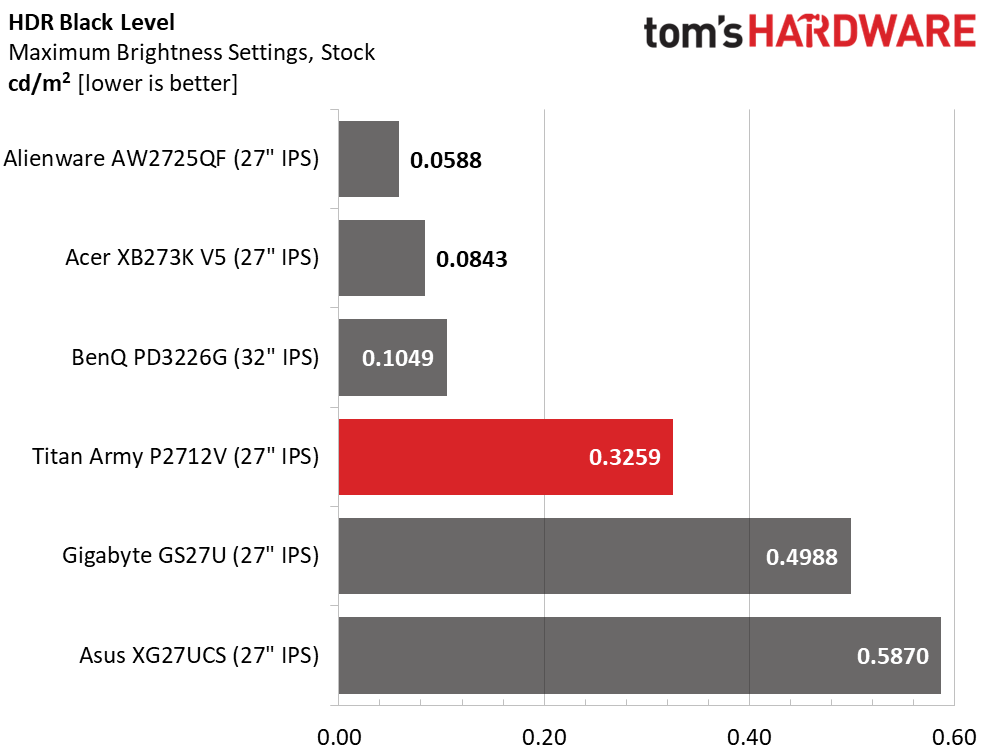

Bright highlights help boost HDR quality and the P2712V is a bit below average in that regard. Though it tops out slightly higher than its SDR value, it still falls short of the other screens, which can all exceed 400 nits. It’s obvious in the black level and contrast charts which displays have dynamic contrast. The P2712V doesn’t have it, so its HDR contrast ratio is the same as its SDR, just over 1,000:1. This is often one of the things sacrificed for lower cost, which is not unlike some of its competitors.
Grayscale, EOTF and Color
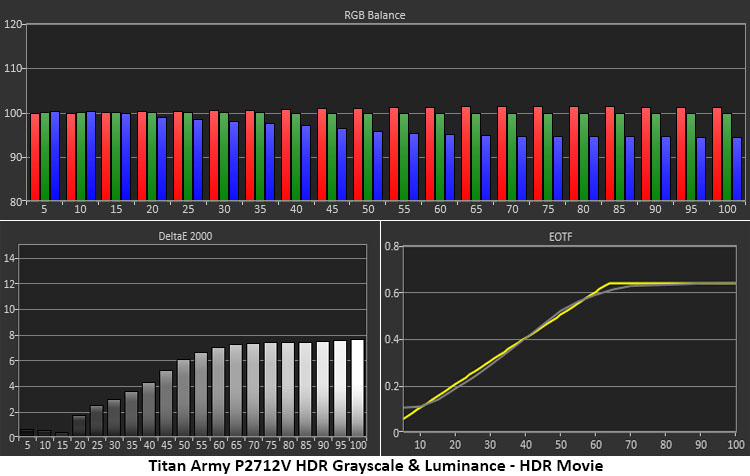
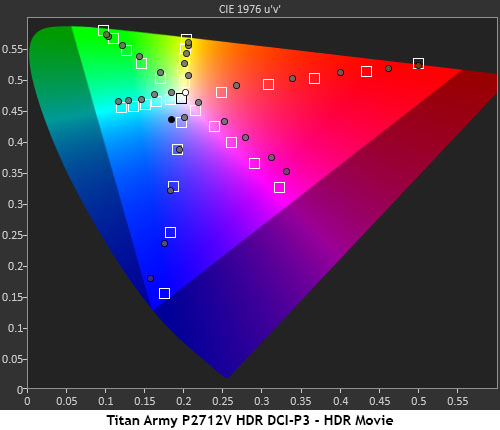
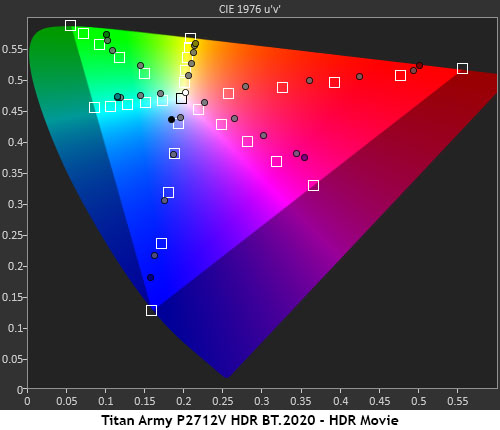
I measured all three HDR modes and noted subtle differences between them. None had ideal grayscale tracking, but Movie had the least visible errors thanks to a little extra red. Auto and Game are decidedly green in tone. Movie also has the best EOTF tracking with near-perfect adherence to the reference line and a soft transition to tone mapping at 65%. Shadow detail is clear but a little light at levels between zero and 10%.
In the gamut tests, the P2712V is generally oversaturated in the primaries’ inner points. This gives HDR images a little more punch than their SDR counterparts. The only visible hue error is magenta, which is a tad too red in tone. In the BT.2020 test, color runs out at 88% red, 65% green and 90% blue. This is typical HDR coverage for a budget display.
Test Takeaway: The P2712V doesn’t have a precisely accurate HDR mode, but its Movie option has very good luminance tracking, which goes a long way towards maximizing detail and clarity. Color is well saturated and reasonably accurate as well. My only gripe is the lack of dynamic contrast which is a trait shared by other value-oriented monitors. The HDR picture is more colorful than the SDR, but with no additional depth or texture.
MORE: Best Gaming Monitors
Get Tom's Hardware's best news and in-depth reviews, straight to your inbox.
MORE: How We Test PC Monitors
MORE: How to Buy a PC Monitor

Christian Eberle is a Contributing Editor for Tom's Hardware US. He's a veteran reviewer of A/V equipment, specializing in monitors. Christian began his obsession with tech when he built his first PC in 1991, a 286 running DOS 3.0 at a blazing 12MHz. In 2006, he undertook training from the Imaging Science Foundation in video calibration and testing and thus started a passion for precise imaging that persists to this day. He is also a professional musician with a degree from the New England Conservatory as a classical bassoonist which he used to good effect as a performer with the West Point Army Band from 1987 to 2013. He enjoys watching movies and listening to high-end audio in his custom-built home theater and can be seen riding trails near his home on a race-ready ICE VTX recumbent trike. Christian enjoys the endless summer in Florida where he lives with his wife and Chihuahua and plays with orchestras around the state.
